The Galápagos tortoise stands tall with scaly skin that looks almost prehistoric. These tortoises live on seven of the Galápagos Islands, with twelve subspecies of varying sizes. Some Galápagos tortoises weigh over 900 pounds, making them the largest existing tortoise species! Tortoises on rainy highlands have domed shells and shortened necks, while on drier lowlands, they have saddleback shells and elongated necks. Although people often say tortoises are slow, the Galápagos tortoise moves faster than expected. Given how intriguing these tortoises are, here are 10 incredible Galápagos tortoise facts for you to explore!
1. Galapágos Islands are named after their tortoise
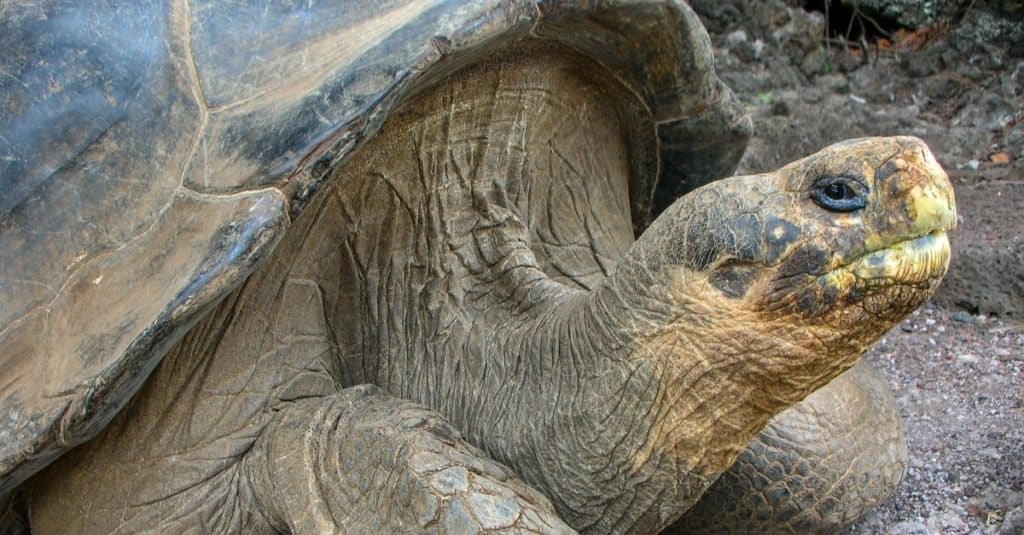
The Spanish term “galapago,” from which the name “Galápagos” is derived, refers to a saddle. However, this is because early explorers misinterpreted the shape of the tortoise shells for a saddle. Humans used to ride saddleback tortoises when they first discovered the islands, but this practice has been banned due to the harm it does to the tortoises.
2. Galapagos tortoises are vulnerable
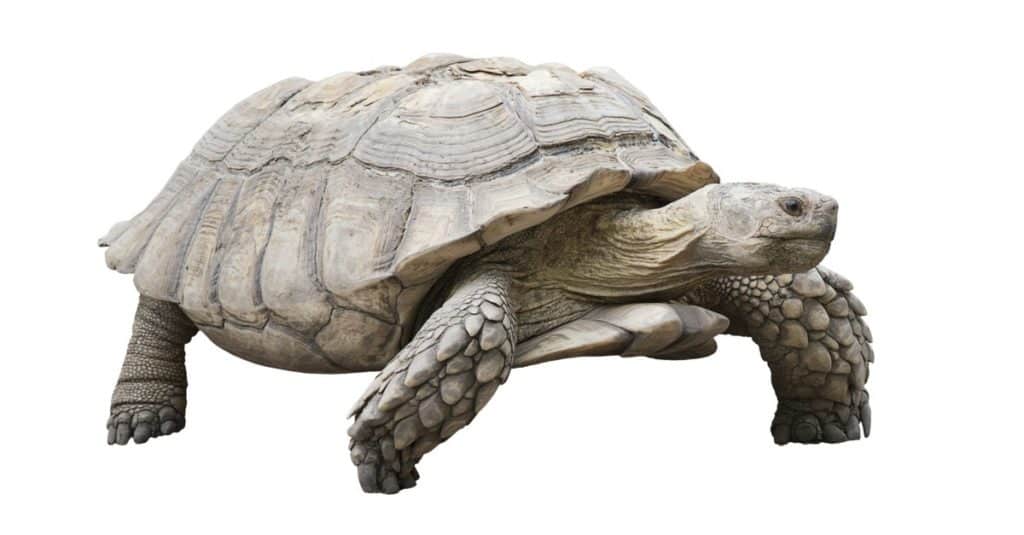
Svetlana Foote/Shutterstock.com
The Galápagos Islands were home to 15 subspecies of Galápagos tortoises during Charles Darwin’s 1835 expedition. Today there are just 12 known subspecies left, and several are in danger of extinction due to declining populations. From the 17th to the 19th century, around 100,000 were killed for food – mainly by pirates and whalers. Nowadays, they face new threats from introduced species. This is because cats and dogs prey on their eggs and juvenile tortoises while livestock such as cattle threatens their food supply by grazing the same land. However, in contrast to juveniles, adult Galápagos tortoises have relatively few natural predators. Unfortunately, these tortoises are still officially classed as a vulnerable species.
3. Galápagos tortoises are actually decent fighters
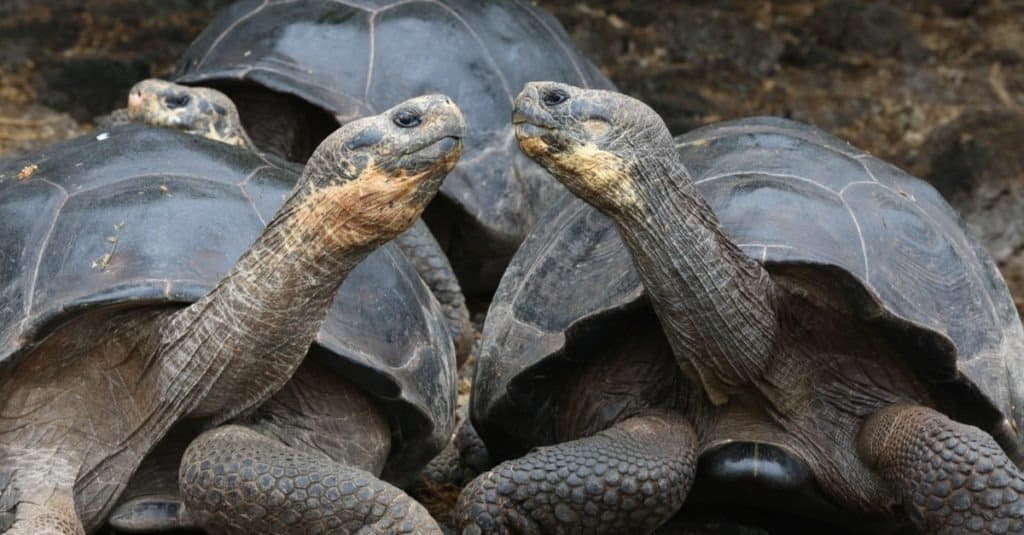
Ian Kennedy/Shutterstock.com
Seeing Galápagos tortoises “fight” is quite a sight. These guys will look at each other angrily before beginning to fight, pushing each other around and trying to bite each other. Size doesn’t always win, though, as a smaller tortoise with a longer neck may be able to knock down a much larger one if he can get his head high enough. The one who loses the fight will eventually avert his gaze and slink away.
4. They can survive a long time without water
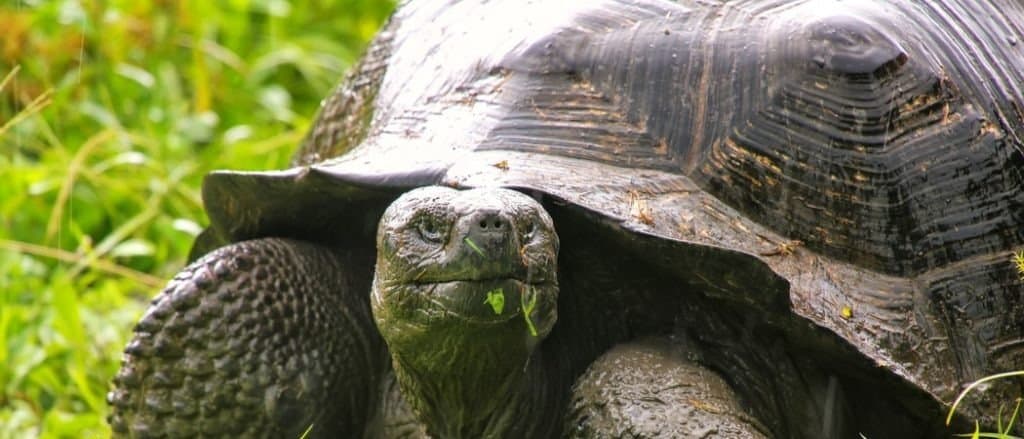
Tortoises in the Galápagos Islands have a remarkable ability to go an entire year without water! How do they go about it? Well, for a start, they can obtain water from the grass and cactus that they eat. Also, they can store water inside their body for a long time due to their slow metabolism. Therefore, their water and body fat reserves allow them to survive for long periods without taking in anything else.
5. Galápagos tortoises scales wear down
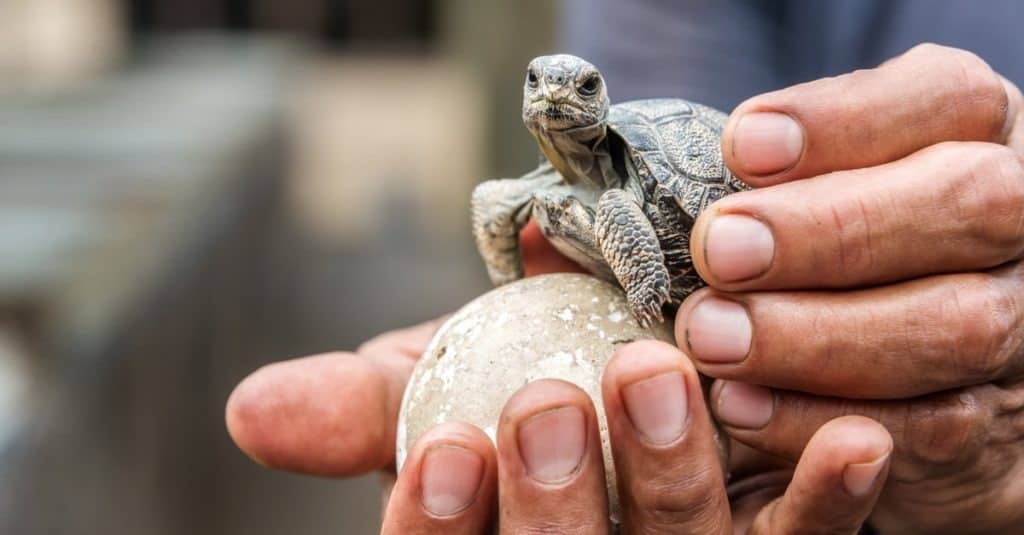
Jess Kraft/Shutterstock.com
The scalloped (scoot) edges of the Galápagos tortoise’s shell and the front leg scales get worn away with age. Eventually, the scutes get worn almost completely smooth.
6. Galápagos tortoises hiss, but they’re not aggressive
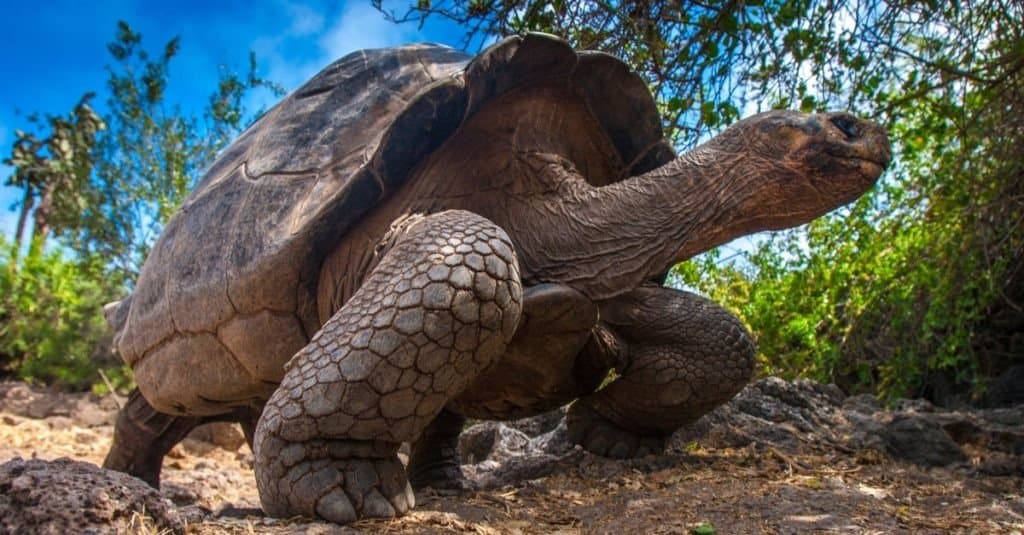
FOTOGRIN/Shutterstock.com
The hissing of turtles is an instinctive reaction, not a means of alarm or startling you. When threatened, turtles will immediately pull their heads back into their shells, emitting a loud hissing noise as they do so. They exhale when they move their heads back, creating a hissing sound. Incredibly, they need to exhale to expel air from their lungs, allowing them to properly fit their head inside their shell.
7. The galápagos tortoise shell is not solid
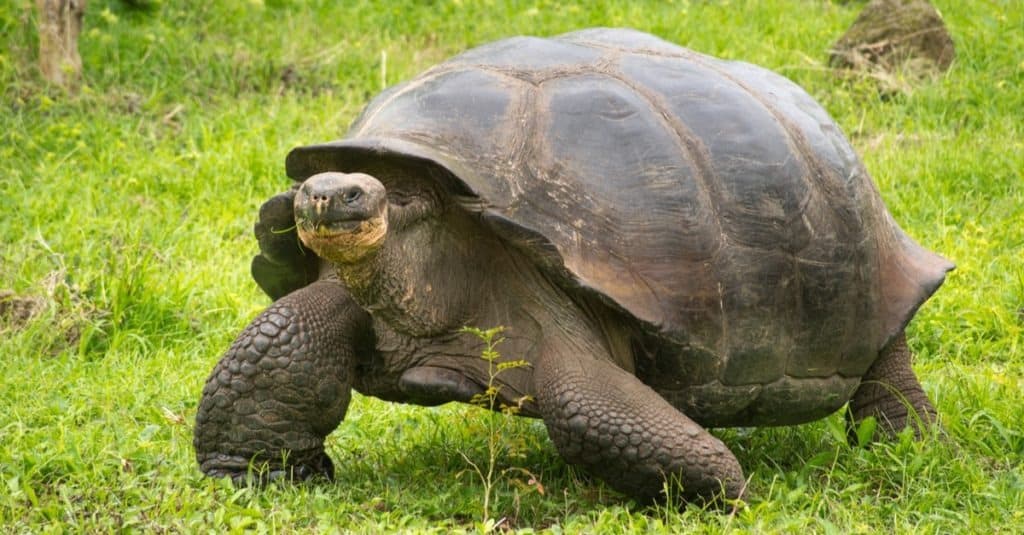
Galápagos tortoises are extremely heavy, but surprisingly, their shell is not the culprit. This is because their shells are not solid, and instead, they are a honeycomb structure that consists of small air chambers.
8. Galápagos tortoise sleep most of the day
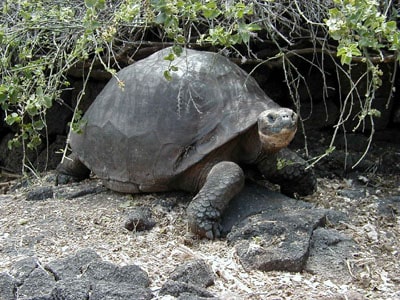
Esculapio – Public Domain
The giant tortoises of the Galápagos spend up to 16 hours napping daily. They may sleep with half of their body submerged in the dirt, water, or a bush to keep warm during cold nights. While the sun is out, they wallow in the mud, which helps them maintain a comfortable body temperature. When not slowly ambling over the islands, the Galápagos tortoise loves nothing more than a good lie-in or siesta.
9. Nest temperature determines gender

After mating, the female will go to an area with dry, sandy soil. Depending on the size of the nest, she digs a hole and deposits anywhere from two to sixteen eggs. The temperature of the nest determines the hatchlings’ gender. In warmer conditions, a greater proportion of female eggs will hatch. However, cooler sand temperatures lead to an increase in males. Incubation takes around 130 days, and upon hatching, the juvenile tortoises need to dig their way up to the surface.
10. They begin their lives in not too comfortable conditions
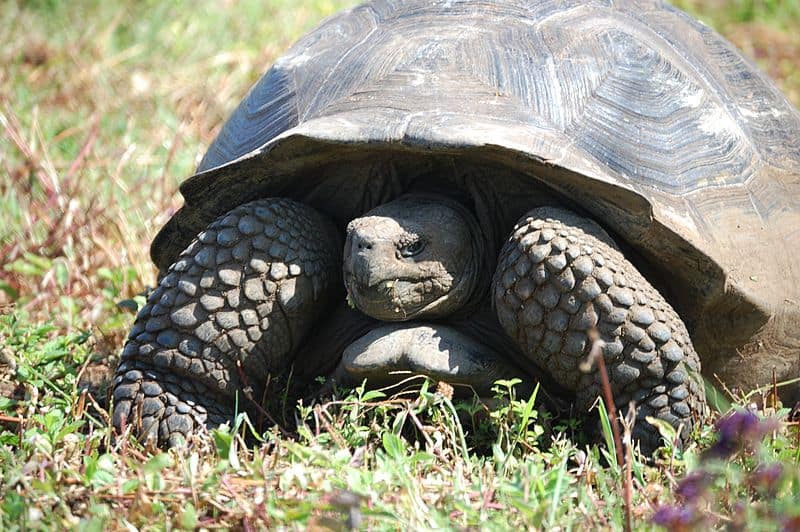
Lieutenant Elizabeth Crapo, NOAA Corps – Public Domain
When preparing to lay their eggs, the female turtles dig a hole in the sand about 12 inches deep and then quickly urinate in it. This stops the sand from piling up on the eggs. After that, she buries her eggs within it. A female Galapagos tortoise can lay anywhere from 8 to 16 eggs. The eggs have a tough shell and are about the size of a tennis ball.
Up Next
- 10 Incredible Desert Tortoise Facts
- 10 Incredible Sulcata Tortoise Facts
- 10 Incredible Turtle Facts
- 10 Incredible Sea Turtle Facts
The post 10 Incredible Galápagos Tortoise Facts appeared first on AZ Animals.
from Animal News, Facts, Rankings, and More! - AZ Animals https://ift.tt/ZFSY5WK
This article on cat health addresses the common concern of excessive licking of private parts. It highlights potential medical issues behind this behavior and offers essential advice for pet owners. For websites focusing on pet care, linking to this article provides valuable insights for cat owners seeking guidance on their feline companions' health.
ReplyDeleteLevel up your drifting game with FR Legends Mod APK for PC! Our guide simplifies the process using BlueStacks. Customize controls, select your mode, and dive into the adrenaline-pumping action.
ReplyDeleteThe Female Delusion Calculator assists women in evaluating how realistic their expectations are for a dream partner by considering factors like age, income, height, and race. It helps manage desires and set achievable goals, thus preventing disappointment. This tool promotes self-awareness and aligns romantic expectations with practical realities.
ReplyDeleteGet the latest tennis betting tips here to stay ahead in the game. Our expert insights cover player performance, match conditions, and head-to-head stats. Use these tips to make informed bets and refine your strategy. Stay updated with accurate predictions to boost your chances of success in tennis betting.
ReplyDeleteThe Galápagos tortoise is a true marvel of nature! These gentle giants can live over 100 years and weigh up to 900 pounds. Their unique adaptations help them thrive on the islands, making them one of the world's longest-living creatures and a symbol of evolutionary wonder.
ReplyDelete"10 Incredible Galápagos Tortoise Facts" offers a fascinating glimpse into the lives of these iconic creatures. From their remarkable longevity to unique adaptations, the article highlights their critical role in the ecosystem. Each fact deepens our appreciation for these majestic tortoises and underscores the importance of conservation efforts to protect them.
ReplyDeleteWow, this article truly amazed me with fascinating insights about Galápagos tortoises! Learning about their incredible lifespan and unique adaptations was so intriguing. I had no idea they could go for months without food or water. Nature is truly remarkable, and this piece beautifully highlights these gentle giants. Great read!
ReplyDelete